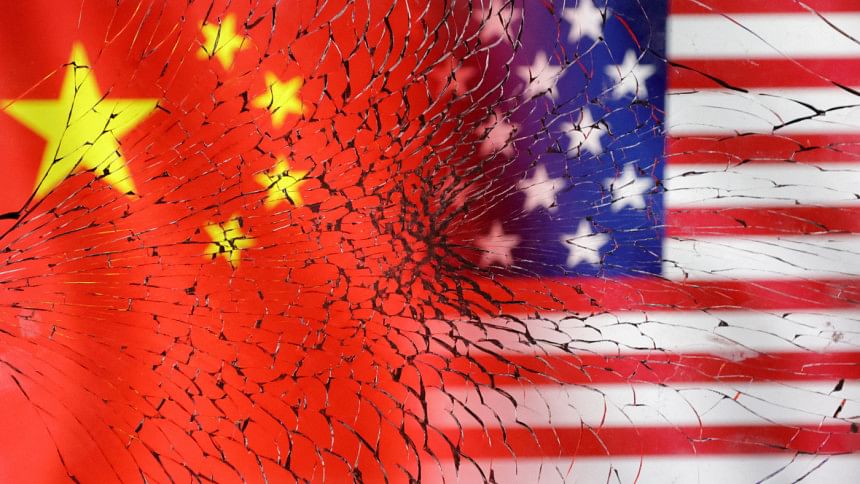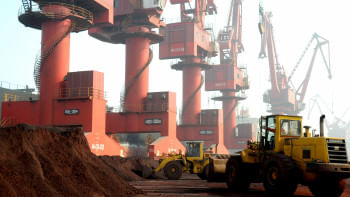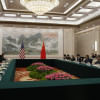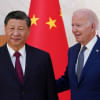China’s competitiveness and American badmouthing

The latest campaign of the United States against China is the charge that China has excess capacity in a range of manufactured goods and so should restrain its exports. The truth is simpler. China and other countries in East Asia are the world's low-cost producers of a range of high-quality industrial products that the world urgently needs: solar modules, electric vehicles, wind turbines, efficient batteries, 5G, and more. Since the US lags behind China in these sectors, it is badmouthing China, characterising China's success as some kind of alleged bad behaviour.
The US approach to China is based on a mix of arrogance, nastiness, and naiveté. The arrogance is that the US runs the world, so how dare China have such economic success! The nastiness is that the US is actively out to hinder China's progress. Progress in our world is hard enough without the US working against it in other countries. The naiveté is to believe that the rest of the world will actually subscribe to US propaganda.
The arrogance was spelled out in 2015 by Ambassador Robert Blackwill and Ashley Tellis in a publication for the Council on Foreign Relations. In March 2015, they wrote:
"Since its founding, the United States has consistently pursued a grand strategy focused on acquiring and maintaining preeminent power over various rivals, first on the North American continent, then in the Western hemisphere, and finally globally...
"Because the American effort to 'integrate' China into the liberal international order has now generated new threats to U.S. primacy in Asia—and could eventually result in a consequential challenge to American power globally—Washington needs a new grand strategy toward China that centers on balancing the rise of Chinese power rather than continuing to assist its ascendancy."
Plainly put, the US's aim is to be Number 1. Its "grand strategy" is not peace, sustainable development, or well-being, but hegemony. It has chosen a grand strategy that automatically pits it against other major powers in a zero-sum struggle. For American strategists, international cooperation is naïve since the US goal is dominance.
It's a vain and ultimately doomed objective. After all, the US has 335 million people while China has 1.4 billion people. How is the US to remain dominant when China is four times more populous? The American answer implicitly is to keep China in relative poverty, with a GDP no more than one-fourth of the US level. But rest assured that China will not be hegemon either. China's share of world output will peak at around 20 percent, and it will face significant challenges of a declining and ageing population during the 21st century.
The US should be cooperating with China, not fighting with it, when it comes to global sustainable development. China's Belt and Road Initiative (BRI), for example, is a highly innovative and important policy to promote sustainable development in the emerging economies. Rather than badmouthing the BRI, as the CIA did in its propaganda, the US should be partnering with China, Korea, Japan, and others in a cooperative policy to promote more investments in green and digital technologies in the emerging economies around the world.
The nasty part of the US's strategy follows its misguided attempt to be global hegemon. The US goal is to slow, if not derail, China's economic success. Blackwill and Tellis spelled out the game plan in their 2015 article. The US tactics include: trying to cut China out of trade agreements; trying to cut China out from high-tech goods such as advanced semiconductors; surrounding China militarily on the Asian rimlands; and forging new military alliances in Asia.
President Barack Obama started the process by trying to negotiate the Trans-Pacific Partnership, based on the absurd idea of creating a US-Asia trading arrangement that excluded China, despite China being the largest trade partner of most or all of the other Asian countries. It was a dumb idea, and it mercifully failed.
Trump was more direct. He hit China over the head with a spate of unilateral tariff increases that plainly and brazenly violated the WTO. To sustain this protectionism, the US simply walked away from WTO enforcement mechanisms, to the extent of paralysing the WTO appellate procedures.
When Biden came to office, he not only kept Trump's tariffs in place, but doubled down on them, introducing new layers of protectionism in American legislation (for example, in the Inflation Reduction Act) and new layers of technology export bans, notably on advanced semiconductors but also other technologies. Both Trump and Biden went after Huawei, China's very innovative and extremely efficient private-sector producer of advanced digital technologies, including 5G and several cutting-edge digital industry platforms.
America's "success" is to have partly closed off its market to China's highly competitive, low-cost, high-quality goods. China's exports to the US markets not only stopped growing, but actually went into decline. Measured as a share of US GDP, US imports from China fell from 2.6 percent of GDP in 2018 to 1.6 percent of GDP in 2023. Yet, this has raised prices to US consumers and companies, and brought no joy to American workers. The US manufacturing workforce at around 13 million workers is only slightly higher than in 2017, and remains far lower than before the 2008 Great Recession.
We also learnt something quite astounding—but actually par for the course—recently, when Reuters revealed that Trump had tasked the CIA with spreading malicious gossip about China on social media, including the badmouthing of China's Belt and Road Initiative. When you can't beat 'em honestly, beat 'em dishonestly. The American way, alas.
So, the US has partly closed its markets to China's goods and wants Europe to do the same. Since China's productive capacity continues to rise, there is indeed an artificially created "excess capacity" in China, because the US has blocked China's exports to the US. Now, the US is warning China against selling its goods to other markets as well.
Here's a vastly better and more honest approach. First, the US should acknowledge that it fell far behind China (including Taiwan), Korea, and Japan in many areas of advanced manufacturing not because of those East Asian countries' nefariousness, but because the US lost its way when it came to fostering green and 5G technologies. While the US has been clinging to the continued expansion of fossil fuel production—a real policy dead-end in a world that needs to decarbonise by mid-century—China has been preparing for zero-carbon energy. Thus, China leads the world in solar, wind, 4th-generation nuclear, EV, and many other technologies.
Second, China does not have an "excess capacity" of manufacturing output, because it is producing what the world actually urgently needs to bring about environmental sustainability and economic development. The apparent glut is the result not only of US protectionism, but also of insufficient financing for sustainable development of the emerging economies. The world doesn't need less of China's output; it needs more finance to speed the energy transition and to end poverty.
Third, the US should be cooperating with China, not fighting with it, when it comes to global sustainable development. China's Belt and Road Initiative (BRI), for example, is a highly innovative and important policy to promote sustainable development in the emerging economies. Rather than badmouthing the BRI, as the CIA did in its propaganda, the US should be partnering with China, Korea, Japan, and others in a cooperative policy to promote more investments in green and digital technologies in the emerging economies around the world. That's the kind of win-win policy that should replace the US's destructive—and self-destructive—machinations for hegemony.
Jeffrey D Sachs is a world-renowned economist, academic, and public policy analyst who serves as the director of the Center for Sustainable Development at Columbia University. He is also the author of To Move the World: JFK's Quest for Peace.
Views expressed in this article are the author's own.
Follow The Daily Star Opinion on Facebook for the latest opinions, commentaries and analyses by experts and professionals. To contribute your article or letter to The Daily Star Opinion, see our guidelines for submission.

 For all latest news, follow The Daily Star's Google News channel.
For all latest news, follow The Daily Star's Google News channel. 











Comments